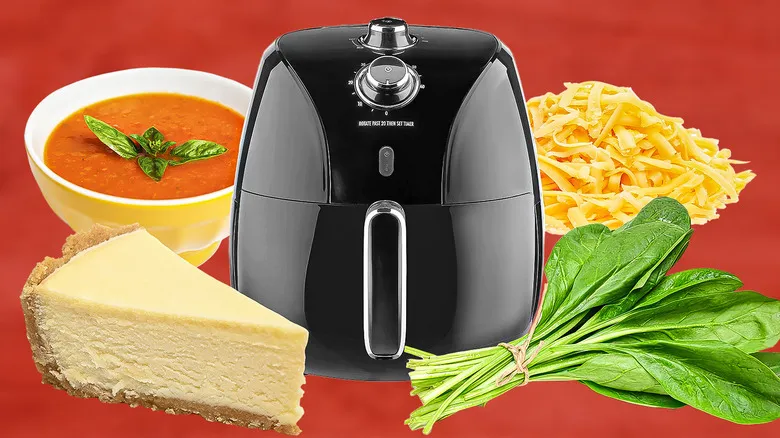Soups and stews
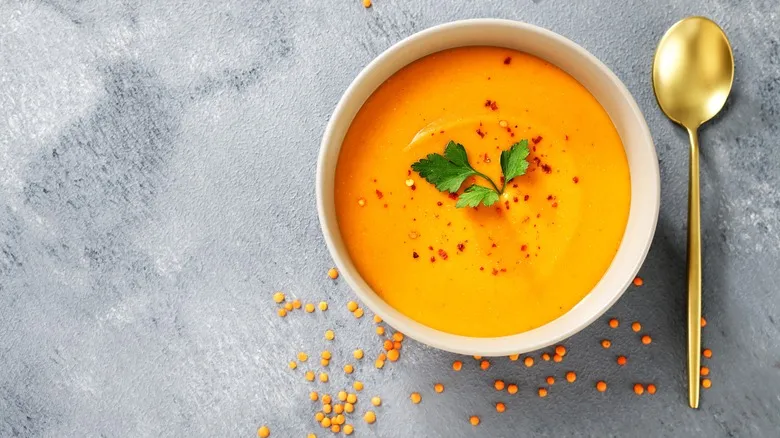
"Any dish that contains liquid is not suitable for air frying. This means no soups or stews, as the liquid can splash and spill," explains Emily Paster. Air fryers are specifically designed for foods with low moisture content, and the intense airflow can cause liquids to move around uncontrollably. Hot liquids splashing in an air fryer can create safety hazards, such as burns or spills that could damage your countertops or appliances.
Additionally, the air fryer's inability to retain moisture can result in uneven cooking, as it lacks the slow, consistent heat necessary for these types of dishes. Soups and stews need a controlled heat and a sealed environment to simmer and develop their flavors, which an air fryer cannot provide. Instead, these meals are better prepared on the stovetop or in a slow cooker, where liquids can heat evenly without being disturbed by constant airflow. In summary, for a comforting bowl of soup or a hearty stew, it's advisable to avoid the air fryer and use cooking methods that are better suited for liquid-based dishes.
Cheesecake
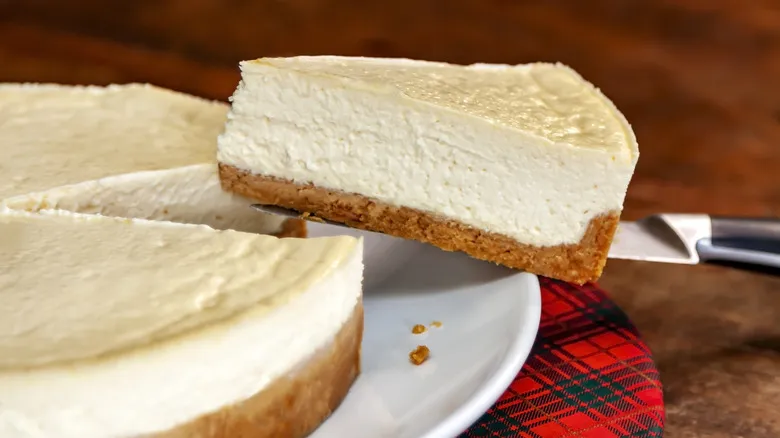
Cheesecakes and similar desserts depend on a moist, controlled environment to develop their signature smooth and creamy texture. This is why using an air fryer for cheesecake is not advisable. "Desserts that thrive in a moist or steamy setting won't fare well in an air fryer, which is hot and dry," explains Emily Paster. "Instant Pots and other pressure cookers are ideal for making cheesecakes and custards because they create a sealed, humid atmosphere."
Ken Tobby, an organic food scientist and CEO of the blog Organic Solace, shares this perspective. "In an air fryer, delicate desserts that require low-temperature, slow baking to achieve a smooth, creamy texture can easily be ruined. The intense heat may cause them to curdle or cook too quickly on the inside, leaving the outside undercooked," Tobby points out.
Cheesecake is a dessert that demands patience and precision, with gradual heat being essential for the right texture. Rushing this process in an air fryer not only compromises the consistency but also diminishes the overall flavor, resulting in a dessert that lacks its characteristic creaminess.
Thin, delicate cuts of meat

When meat cuts are thin or particularly lean, they tend to be quite fragile, making them less suitable for the air fryer. The air fryer's quick, intense heat can rapidly dry out these proteins. "I would steer clear of thin cuts of fish or chicken unless they are coated in breadcrumbs," advises Emily Paster. Without the protective layer of batter to retain their juices, the air fryer's high temperature and dry heat can dehydrate these cuts in just a few minutes, resulting in tough, overcooked meat.
Fish fillets such as cod, sole, and tilapia are especially at risk due to their low fat content, which means they have less natural moisture to shield them from the intense heat. In the air fryer, they can quickly lose their tenderness and "become dehydrated," notes Ken Tobby. Even with breadcrumbs or batter, cooking them in an air fryer still carries some risk. For optimal results with these types of meats, it's generally better to use methods like pan-searing or grilling, which provide better control over temperature and moisture.
Saucy or marinated foods without batter
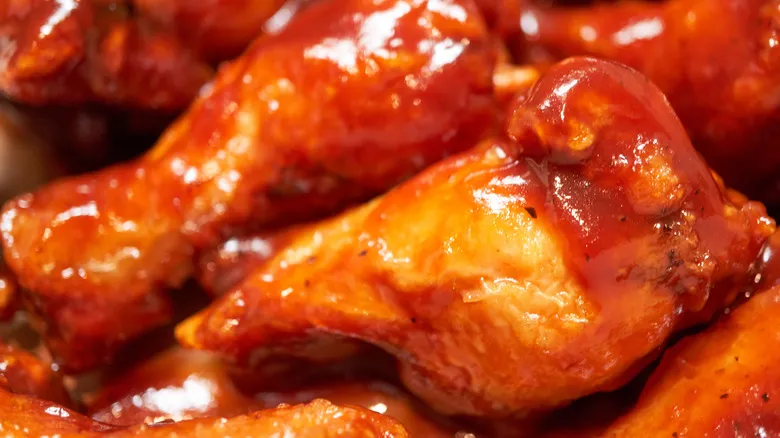
Foods that are heavily coated in sauces or marinades aren't ideal for an air fryer. The intense air circulation can blow the sauce off the food, resulting in a mess and unevenly flavored dishes. Additionally, the sauce may drip through the basket, causing your food to stick to the fryer's surface. As Emily Paster notes, "In my book, I have a recipe for General Tso's chicken, but I cook the chicken pieces in the air fryer first and then toss them in the sauce afterward — I don’t attempt to cook them in the air fryer with that thick sauce."
Similarly, foods that are heavily marinated, especially those soaked in oil or liquids, can encounter issues. Oily marinades can lead to flare-ups, posing a potential safety risk. If you’re determined to air fry marinated proteins or vegetables, a good solution is to coat them in a dry batter to help keep everything intact during cooking. "For instance, I might marinate chicken tenders or pieces of fish, but then I would batter them, which prevents any of the marinade from being blown off," Paster explains. She does mention that "sticky, brushed-on sauces work well," as they tend to stick better to the food during cooking without creating a mess. Her recipe for chicken breasts brushed with peach-mango jam turns out wonderfully in the air fryer. "The jam adheres to the chicken and caramelizes beautifully."
Homemade chips
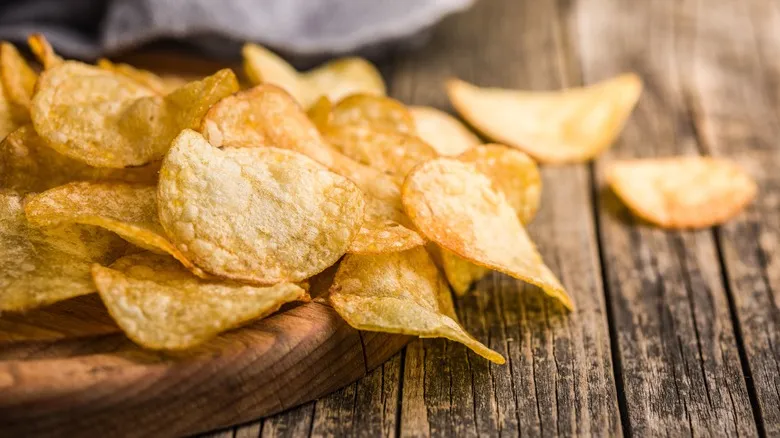
Preparing homemade potato or kale chips in an air fryer might seem like a quick and easy option, but it often falls short of producing excellent results. Delicate ingredients, such as thinly sliced potatoes, struggle against the air fryer's strong fan. "I've attempted to make homemade potato or kale chips in the air fryer, but they tend to get tossed around," shares Emily Paster. "Even making tortilla chips from cut tortillas can be challenging." The result is usually unevenly cooked chips, with some pieces burning while others remain undercooked.
Fanila Nawaby, chef and owner of Mimi's Kabob, also recommends avoiding the air fryer for chip-making. Instead, she suggests using a conventional oven for a more consistent cooking process and a far superior flavor. However, don’t be discouraged from using the air fryer for potatoes entirely. Paster notes, "You're better off making wedges or thick-cut fries."
Wet batters
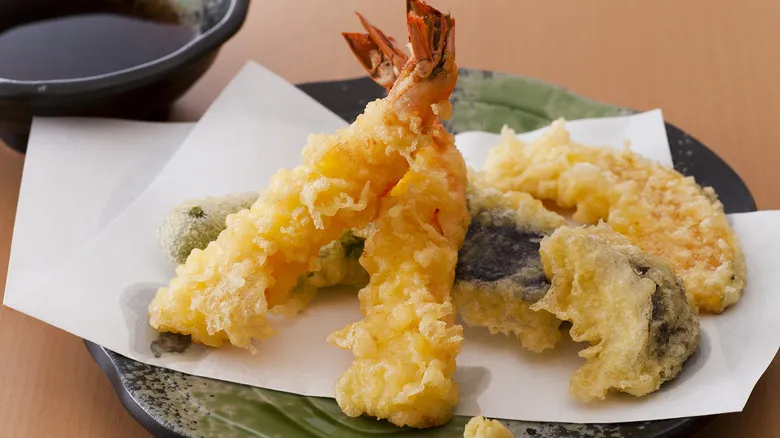
"According to Emily Paster, most types of wet batters are not suitable for the air fryer. The term 'air fryer' leads many to believe they can prepare dishes like tempura or beer-battered fish in it, but these items don't perform well. The powerful fan often blows off the wet batter, resulting in a significant mess. Instead of achieving the desired crunch and texture, you'll likely end up with a soggy, uneven crust, along with a lot of cleanup.
Tobby shares this view, noting that the batter in an air fryer fails to crisp up properly, making traditional deep frying a more dependable choice. The main issue is that the air fryer's rapid heating prevents the batter from setting before it encounters direct airflow. While breaded foods work well in an air fryer, those with wet batter simply don't yield the same results."
Cheese
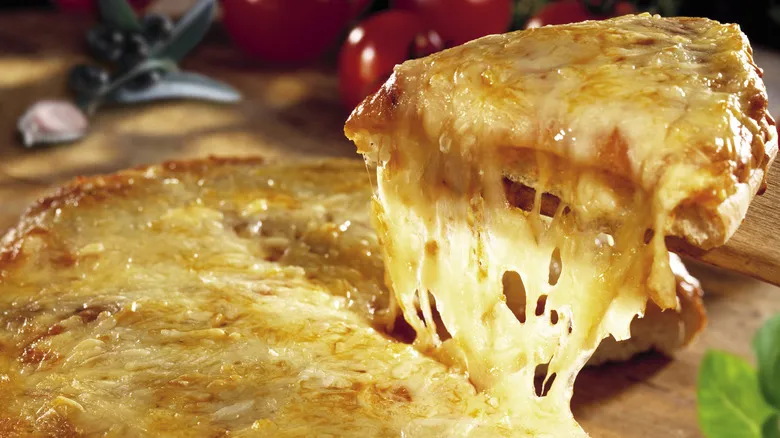
Cheese is undoubtedly one of the most delightful culinary creations, but that doesn't mean it's suitable for the air fryer. Emily Paster cautions, "Be careful with melting cheese, as it can adhere to the air fryer basket, creating a mess and potentially burning." This implies that dishes like pizza and lasagna should be avoided. If you find it hard to resist using cheese in an air fryer, Paster suggests, "Cook one side without cheese first, then flip the food, add the cheese, and cook it on top only." Another tip is to ensure the cheese is thoroughly frozen and securely enclosed within the food, although this still carries some risk. Ultimately, it's wiser to opt for a cooking method that provides more controlled heat.
Foods that are predominantly cheese-based, such as mozzarella sticks or grilled cheese sandwiches, often do not fare well in the air fryer due to the high heat. Fanila Nawaby warns, "The cheese tends to leak out before the outer layer has a chance to crisp." Ken Tobby further highlights the problem, stating, "Instead of achieving that perfect golden crispiness, they turn into a messy puddle." In conclusion, while the idea of tossing cheese into an air fryer may be tempting, it's likely best to avoid it.
Raw grains
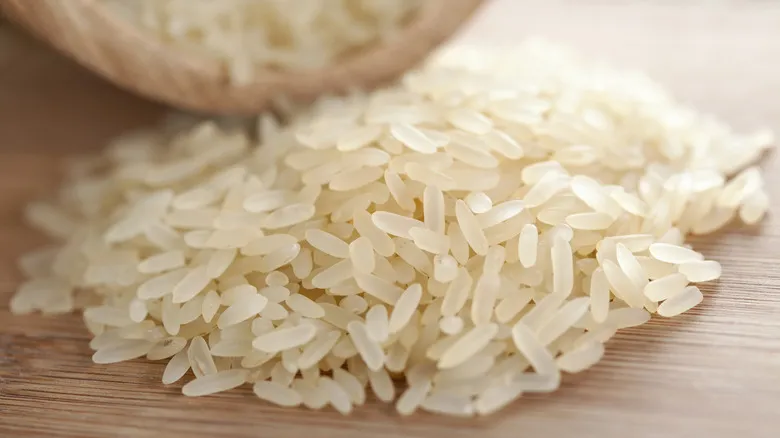
Air fryers are great for preparing a variety of foods, but raw grains are not one of them. As Fanila Nawaby explains, "Rice, pasta, and other grains must be boiled or steamed before they can be air-fried. Trying to cook them from raw in an air fryer will result in hard, inedible grains." This is due to the fact that the dry heat of the air fryer does not effectively penetrate raw grains, leading to a texture that is too tough to consume.
Even when grains are pre-cooked, they can still be challenging to handle in an air fryer. Ken Tobby shares his experience, noting that "even cooked rice can end up extremely dry" after being air-fried. The air fryer tends to crisp the outside while often leaving the grains lacking moisture, making them quite unappetizing. For the best results with grains, it's advisable to stick to traditional cooking methods like boiling and steaming to preserve their ideal texture and flavor.
Whole roasts
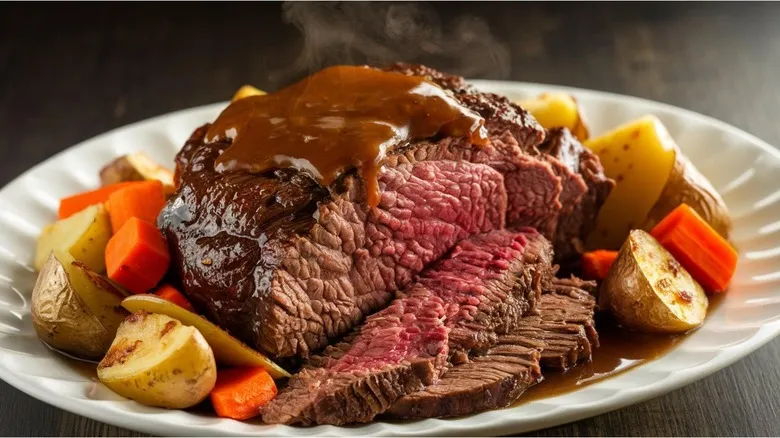
Air fryers are excellent for preparing small servings, but they struggle with whole roasts or larger pieces of meat. "They aren't ideal for foods that benefit from low and slow cooking or require liquid, such as brisket, pot roast, or other tougher cuts," says Emily Paster. The intense, rapid heat of an air fryer doesn't effectively break down the fibers in tougher meats that need time to become tender.
Fanila Nawaby concurs, noting that "large cuts of meat or whole chickens often cook unevenly in an air fryer." The exterior may become overcooked while the interior remains undercooked, which poses a significant risk, especially with chicken. In short, an air fryer is not designed for cooking whole roasts, where consistent, gentle heat is crucial for breaking down connective tissues and achieving tenderness throughout. It's far better to braise a whole roast or use a traditional oven.
Glazed foods
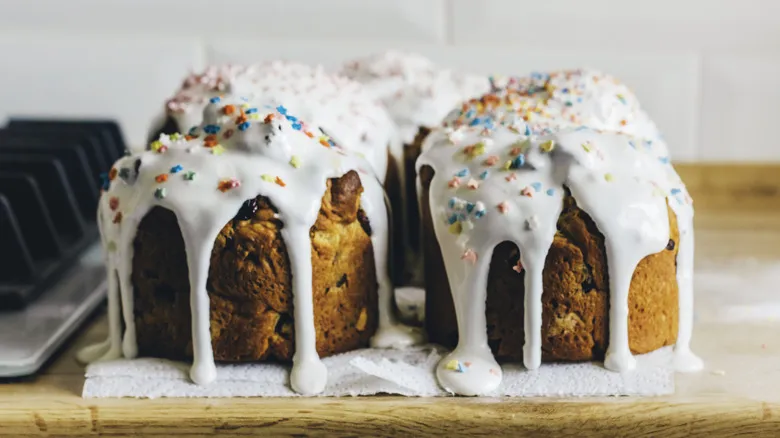
Ken Tobby cautions that foods coated with sugary glazes "can burn more quickly in an air fryer." The intense heat often causes the sugar to caramelize too rapidly, resulting in a burnt taste instead of the desired golden-brown appearance. Emily Paster advises, "I would be cautious when air-frying glazed items because, similar to a wet batter, the powerful fans of the air fryer might blow it off." This could lead to a sticky mess in the air fryer basket, which is certainly not enjoyable.
Generally, if you plan to air fry something with a glaze, it's typically better to add the glaze after cooking. This way, you can prevent the dish from drying out or burning during the cooking process. "I have plenty of delightful dessert recipes in my book, such as donuts and other 'fried' treats, but I always apply the glaze or other toppings, like pearl sugar, after they come out of the air fryer," Paster explains.
Extra-virgin olive oil
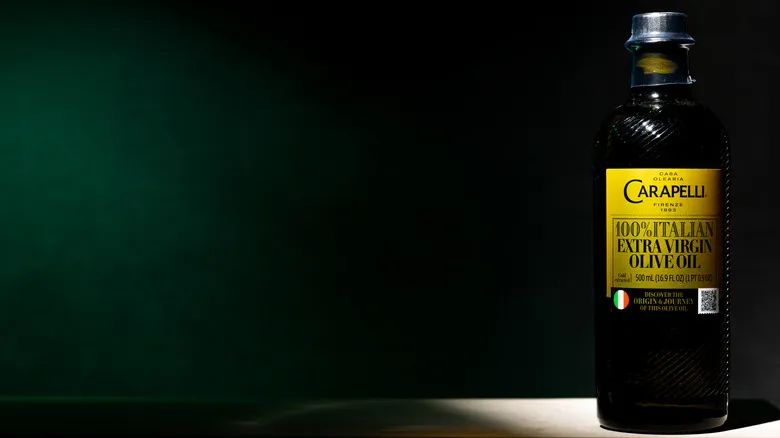
Not all oils are appropriate for the high temperatures of an air fryer, and extra-virgin olive oil is one of them. As Paster points out, "Air frying is usually performed at high heat, so I advise against using extra virgin olive oil or other fats with a low smoke point." These oils can break down at the temperatures needed for air frying, leading to a burnt and bitter taste.
Instead, choose oils with higher smoke points, such as vegetable oil or grapeseed oil, which can endure the intense heat of the air fryer without burning. This will enhance both your cooking experience and the flavor of your dishes. Avocado oil is another excellent option, boasting a high smoke point and a mild flavor that pairs well with many recipes. Additionally, it is rich in healthy fats, making it a fantastic choice for air frying in terms of both taste and nutrition.
Nonstick sprays
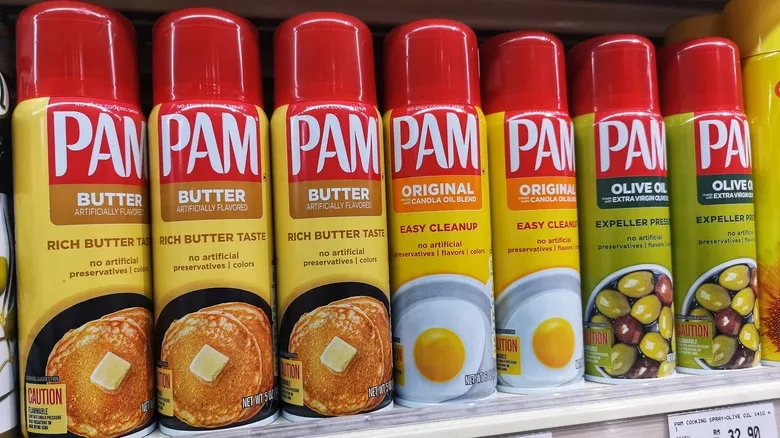
Nonstick sprays can be a convenient kitchen aid, but it's best to keep them away from your air fryer. "Products like Pam contain chemicals that may harm the nonstick coating of the air fryer basket. I steer clear of them," advises Emily Paster. Over time, these substances can degrade the coating, resulting in food sticking and making cleanup a real chore. Even worse, the coating could potentially end up in your meals. Yikes.
Additionally, nonstick sprays aren't the healthiest choice either. They often contain additives that are best avoided. Instead, when you want to lightly coat your air fryer basket, try using an oil sprayer filled with a high-smoke-point oil, such as avocado oil. This approach not only preserves the integrity of your air fryer but also allows you to apply just the right amount of oil to your food.
Leafy greens
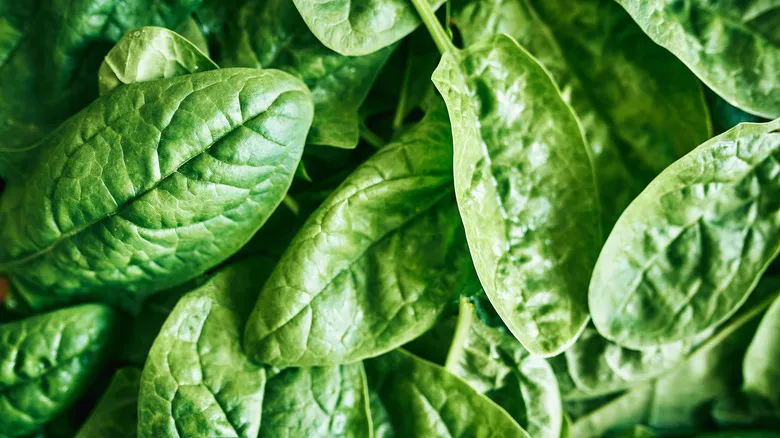
Air-frying leafy vegetables like spinach or collard greens may not be the best choice. Due to their light weight, they can easily get tossed around in the air fryer, resulting in uneven cooking or even burnt leaves, as noted by Fanila Nawaby. The rapid air circulation in air fryers contributes to this problem, causing the leaves to not stay in place. Additionally, their thinness means that the high temperatures can dehydrate them quickly.
Ken Tobby points out that leafy greens often end up as dry crumbs rather than crispy treats. If you're determined to use your air fryer for leafy greens, there is a way to improve your chances of success. Consider using a high-smoke-point oil to help weigh them down and add some moisture (they definitely need it). However, be cautious, as too much oil can cause it to splatter around the air fryer, resulting in a messy cleanup and unevenly cooked greens.
Recommended
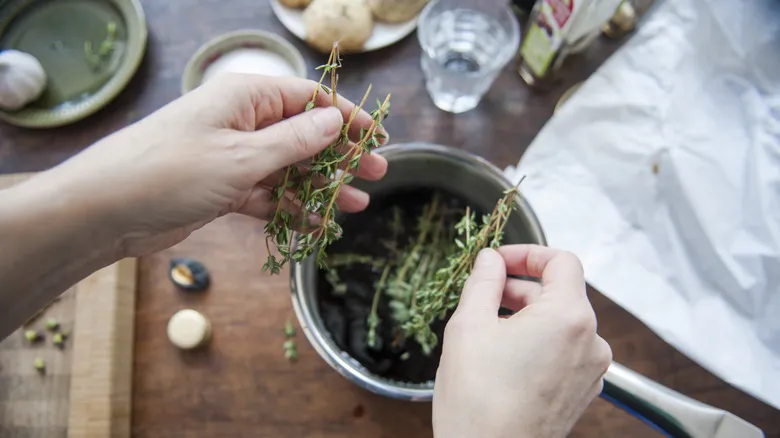
The Everything Guide To Cooking With Thyme
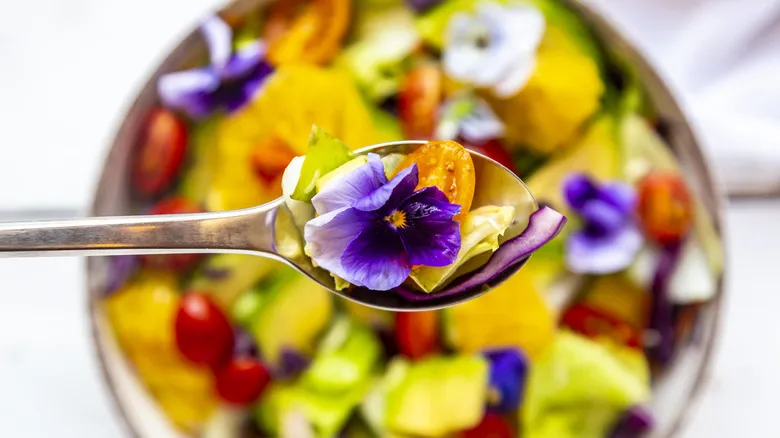
Edible Flowers: The Answer To Making All Of Your Meals A Little More Demure And Mindful
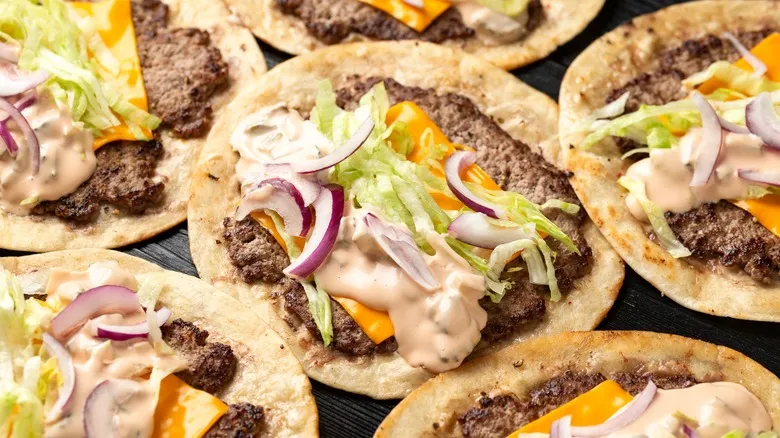
The Clever Hack You Need For Smash Burger-Inspired Tacos
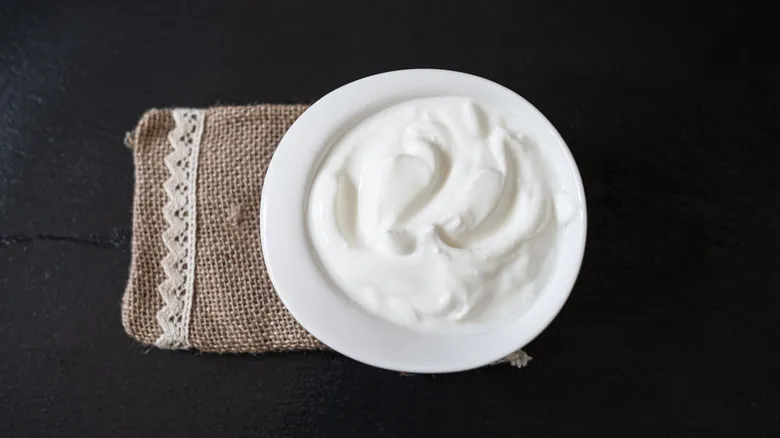
Transform Heavy Cream Into Sour Cream With One Easy Addition
Next up

